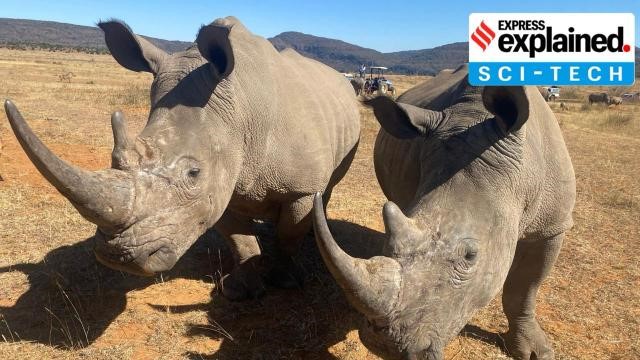Biofortified Potatoes
- 12 Aug 2025
In News:
India is intensifying efforts to combat micronutrient deficiencies and enhancenutritional security by introducing biofortified potatoes with enhanced iron content. These varieties, developed by the International Potato Center (CIP), Peru, are being adapted for Indian conditions in collaboration with the ICAR–Central Potato Research Institute (CPRI), Shimla.
What are Biofortified Potatoes?
- Definition: Specially bred potatoes enriched with higher levels of iron, zinc, and vitamin C compared to conventional varieties.
- Objective: Address iron deficiency anemia and “hidden hunger” without compromising yield or taste.
- Development: CIP has released iron-rich potato varieties in Peru, now under evaluation and seed multiplication for Indian farmers.
Sweet Potatoes with Vitamin A
- Biofortified Sweet Potatoes with high beta-carotene (Vitamin A precursor) are already cultivated in Odisha, West Bengal, Karnataka, and Assam.
- Their bright orange flesh indicates nutritional richness, helping prevent night blindness, strengthen immunity, and improve child growth.
- ICAR-CTCRI’s SP-95/4 variety combines high beta-carotene with good yield, enhancing tribal nutrition.
- Advantages: Long shelf life (up to 2 years without refrigeration), versatile in food preparation, and suitable for Mid-Day Meal and nutrition schemes.
Institutional Initiatives
- CIP South Asia Regional Centre is being set up in Agra, Uttar Pradesh, within the Indo-Gangetic Plains – the world’s largest potato-producing region – to strengthen R&D and seed access.
- ICAR’s Wider Biofortification Drive:
- Released 61 biofortified crop varieties, including 34 field crops (cereals, pulses, millets, oilseeds) and 27 horticultural crops (tubers, vegetables, medicinal plants).
- Examples:
- CR Dhan 416: Salinity-resistant rice with pest resistance.
- Durum Wheat: Rich in zinc (41.1 ppm), iron (38.5 ppm), and 12% protein.
Biofortification: Concept and Importance
- Definition: Enhancing the nutrient content of crops through conventional breeding, agronomic practices, or biotechnology while preserving consumer-preferred traits.
- Examples:
- Iron-rich: Rice, beans, sweet potato, cassava, legumes.
- Zinc-rich: Wheat, rice, maize, beans.
- Vitamin A-rich: Sweet potato, maize, cassava.
- Protein/amino acid-rich: Sorghum, cassava.
Significance for India
- Public Health: Addresses widespread iron deficiency anemia, especially among women and children.
- Agricultural Sustainability: Promotes nutritionally dense crops without heavy reliance on supplements.
- Policy Alignment: Supports PoshanAbhiyaan, Mid-Day Meal Scheme, and SDG 2 (Zero Hunger).
- Economic Benefits: Enhances farmer incomes by creating demand for nutrient-rich crops.
MERITE Scheme

- 12 Aug 2025
In News:
The Union Cabinet has approved the Multidisciplinary Education and Research Improvement in Technical Education (MERITE) Scheme with a total outlay of ?4,200 crore (2025–26 to 2029–30). This includes ?2,100 crore World Bank loan assistance. The scheme seeks to transform India’s technical education landscape in line with the National Education Policy (NEP), 2020.
Coverage
- Institutions: 275 government/government-aided technical institutions (175 engineering institutions + 100 polytechnics).
- Beneficiaries: Around 7.5 lakh students across all States and Union Territories.
- Stakeholders: National Institutes of Technology (NITs), State Engineering Institutions, Affiliating Technical Universities (ATUs), with implementation support from IITs, IIMs, AICTE, and NBA.
Objectives
- Improve quality, equity, and governance in technical education.
- Align curricula with labour market requirements.
- Strengthen the research and innovation ecosystem.
- Support State/UT technical education departments in digitalization and quality assurance.
Key Focus Areas
- Digital Transformation: ICT-enabled learning, blended teaching models.
- Multidisciplinary Programs: Introduction of NEP-2020 aligned technical courses.
- Skill & Employability Enhancement: Internships, industry-linked curricula, language labs, skill/maker labs.
- Research and Innovation: Establishing research hubs, incubation centres, innovation labs.
- Faculty & Governance: Faculty development programs, creation of academic administrators with focus on women leadership.
- Accreditation & Quality Assurance: Strengthening institutional governance and accountability.
Expected Outcomes
- Increased student employability and higher placement rates.
- Improved research output and innovation ecosystem.
- Greater equity and inclusion in technical education, with emphasis on reducing gender gaps and digital divide.
- Enhanced global competitiveness of Indian technical institutions.
Employment Generation Impact
By modernising technical education and strengthening linkages with industry, MERITE is expected to:
- Improve fresh graduates’ placement prospects.
- Foster entrepreneurship through incubation and innovation centres.
- Contribute to reducing unemployment among engineering graduates.
Background and Significance
India’s sustainable and inclusive growth hinges on technological advancement, which demands upgraded academic and research standards. MERITE builds upon NEP-2020 reforms such as curriculum revamp, skill development, interdisciplinary learning, and enhanced governance. Importantly, it integrates global expertise through the World Bank partnership.
The scheme also ensures participatory governance, incorporating feedback from States/UTs during policy design, thereby strengthening cooperative federalism in higher education reform.
Global Risk of Zoonotic Diseases and India’s Preparedness
- 12 Aug 2025
In News:
A recent study published in Science Advances has highlighted that over 9.3% of the world’s land surface is at high (6.3%) or very high (3%) risk of zoonotic outbreaks — diseases transmitted between animals and humans. About 3% of the global population lives in extremely high-risk areas, while nearly 20% live in medium-risk zones.
The study introduced a Global Epidemic Risk Index, combining country-specific zoonotic risk factors with national preparedness capacities, to help policymakers strengthen health systems, allocate resources effectively, and enhance global cooperation.
Disease Burden and Examples
- Zoonotic diseases account for 60% of all known infectious diseases and up to 75% of emerging infectious diseases (EIDs).
- Globally, they cause 2.5 billion cases and 2.7 million deaths annually.
- Examples: Rabies, anthrax, influenza (H1N1, H5N1), Nipah virus, brucellosis, tuberculosis, Ebola, SARS, MERS, and Covid-19.
Drivers of Spillover Events
- Climate Change: Rising temperatures, erratic rainfall, and water scarcity heighten risks by altering habitats and vector distribution.
- Land Use Change: Deforestation, urban expansion, and agricultural intensification increase human–animal contact.
- Transmission Routes:
- Direct (e.g., avian influenza)
- Food-borne (e.g., salmonella)
- Vector-borne (e.g., West Nile virus)
- Water-borne (e.g., cryptosporidiosis)
Regional Vulnerabilities
- Latin America: 27% of land at high risk
- Oceania: 18.6%
- Asia: 7%
- Africa: 5%
India’s Vulnerability
- An ICMR study (2018–23) found that 8.3% of all reported outbreaks (583 of 6,948) were zoonotic.
- Outbreaks peaked during June–August, linked to monsoon-driven ecological changes.
- The Northeast region accounted for 35.8% of reported zoonotic outbreaks.
India’s Initiatives
- National Animal Disease Control Programme (NADCP): Mass vaccination to eliminate Foot & Mouth Disease (FMD) and Brucellosis.
- Target: Control FMD by 2025 and eradicate by 2030.
- National One Health Programme for Prevention and Control of Zoonoses (2013): Integrated surveillance and inter-sectoral coordination.
- Animal Birth Control (Dogs) Rules, 2023: Rabies vaccination and sterilisation of stray dogs.
- Rabies Vaccination under ASCAD (Livestock Health & Disease Control Programme).
Global Initiatives
- Zoonotic Disease Integrated Action (ZODIAC): Launched by IAEA (2020) for early detection and rapid response.
- World Zoonoses Day (6 July): Marks Louis Pasteur’s rabies vaccine in 1885.
- G20 Pandemic Fund: Financial support for strengthening preparedness and response.
- Global Early Warning System (GLEWS): A WHO–FAO–WOAH collaboration for coordinated zoonotic disease surveillance.
One Health Approach
The One Health framework recognizes the interconnectedness of human, animal, and environmental health. It promotes collaborative, multisectoral strategies for sustainable disease prevention and response.
Rhisotope Project

- 12 Aug 2025
In News:
South Africa, which shelters the world’s largest rhino population, has lost over 10,000 rhinos in the last decade to poaching driven by the illegal horn trade in Asian markets. To counter this crisis, the University of the Witwatersrand, in collaboration with the International Atomic Energy Agency (IAEA), has launched the Rhisotope Project (2024) — a novel initiative using radioactive isotopes to protect rhinos.
What is the Rhisotope Project?
- A non-invasive procedure where rhino horns are injected with low doses of radioisotopes.
- The process is harmless to rhinos but makes horns:
- Detectable through Radiation Portal Monitors (RPMs) and scanners at borders, ports, and airports — even in sealed shipping containers.
- Toxic and unfit for human use, reducing demand in illegal trade.
- Pilot studies (2024–25):
- 20 rhinos in the Waterberg Biosphere Reserve were treated.
- Tests by Ghent University (Belgium) showed no cellular damage or health impact.
- 3D-printed horns used in trials confirmed detectability in container loads.
Why Radioisotopes?
- Radioisotopes are unstable forms of elements that emit ionising radiation (alpha, beta, gamma) to achieve stability.
- They are easily traceable with nuclear detection systems.
- Already widely used in medicine (I-131 for thyroid, Tc-99m for imaging), archaeology (C-14 dating), and industry.
The Scale of the Crisis
- Global rhino numbers: Declined from ~5,00,000 in the early 20th century to ~27,000 today (IUCN).
- South Africa: Lost 103 rhinos to poaching in the first quarter of 2025 alone.
- Conventional measures like dehorning reduce poaching but disrupt rhino social behaviour and habitat use. The Rhisotope Project offers a less disruptive alternative.
Broader Conservation Significance
- If successful, the method could be extended to other endangered species like elephants and pangolins.
- It represents an international collaboration that combines nuclear science with wildlife conservation, redefining the role of technology in biodiversity protection.
Threats Beyond Poaching
- Invasive species: Plants like Parthenium threaten habitats (e.g., Assam’s Pobitora Wildlife Sanctuary, home to the densest one-horned rhino population).
- Climate change: Intensified droughts and monsoons push rhinos into human-dominated landscapes, increasing conflicts.
- Habitat loss due to agricultural expansion and human settlement.
Rhino Conservation Initiatives
- Global/Regional:
- New Delhi Declaration on Asian Rhinos (2019)
- DNA Profiling of all Rhinos for tracking and protection
- India-specific:
- National Rhino Conservation Strategy
- Indian Rhino Vision 2020 (for Assam’s one-horned rhinos)
About the IAEA
- Established in 1957 as the UN’s “Atoms for Peace”organisation.
- Promotes peaceful applications of nuclear technology while preventing misuse for weapons.
- 178 member states; India is a founding member.
- Awarded the 2005 Nobel Peace Prize for contributions to nuclear safety and disarmament.
- HQ: Vienna, Austria. Reports to both UNGA and UNSC.
National Narcotics Helpline MANAS
- 12 Aug 2025
In News:
The Government of India launched the National Narcotics Helpline MANAS (Madak-PadarthNishedAsoochna Kendra) to strengthen citizen participation in the fight against the drug menace. The initiative, spearheaded by the Narcotics Control Bureau (NCB) under the Ministry of Home Affairs (MHA), functions as a secure, bilingual, and citizen-centric platform to enable anonymous reporting of drug trafficking, illicit cultivation, and related crimes, while also providing counselling and rehabilitation support.
Key Features of MANAS
- Helpline Number: 1933 (Toll-Free)
- Digital Access: Web portal (www.ncbmanas.gov.in), Email (info.ncbmanas@gov.in), and UMANG Mobile App
- Integration: Direct transfer to the MoSJE De-addiction Helpline (14446) for rehabilitation guidance
- Awareness Outreach: Posters, videos, contests, and citizen engagement through MyGov platform under the Drug-Free Bharat campaign
India’s Legal & Policy Framework Against Drug Abuse
- Constitutional Backing: Article 47 directs the State to prohibit intoxicating substances except for medicinal purposes.
- Legislation:
- Narcotic Drugs and Psychotropic Substances (NDPS) Act, 1985
- Prevention of Illicit Traffic in NDPS Act, 1988
- Drugs and Cosmetics Act, 1940
- International Conventions: India is party to the
- Single Convention on Narcotic Drugs, 1961 (amended 1972)
- Convention on Psychotropic Substances, 1971
- UN Convention against Illicit Traffic in Narcotic Drugs and Psychotropic Substances, 1988
- Other Initiatives: NIDAAN Portal (for drug law offenders), NashaMukt Bharat Abhiyan (community-based de-addiction programme).
Significance for Governance & Society
The MANAS helpline marks a shift from enforcement-centric approaches to a citizen-participatory, tech-enabled model. It bridges law enforcement, rehabilitation, and public awareness, reflecting India’s commitment to a balanced supply and demand reduction strategy against narcotics.
